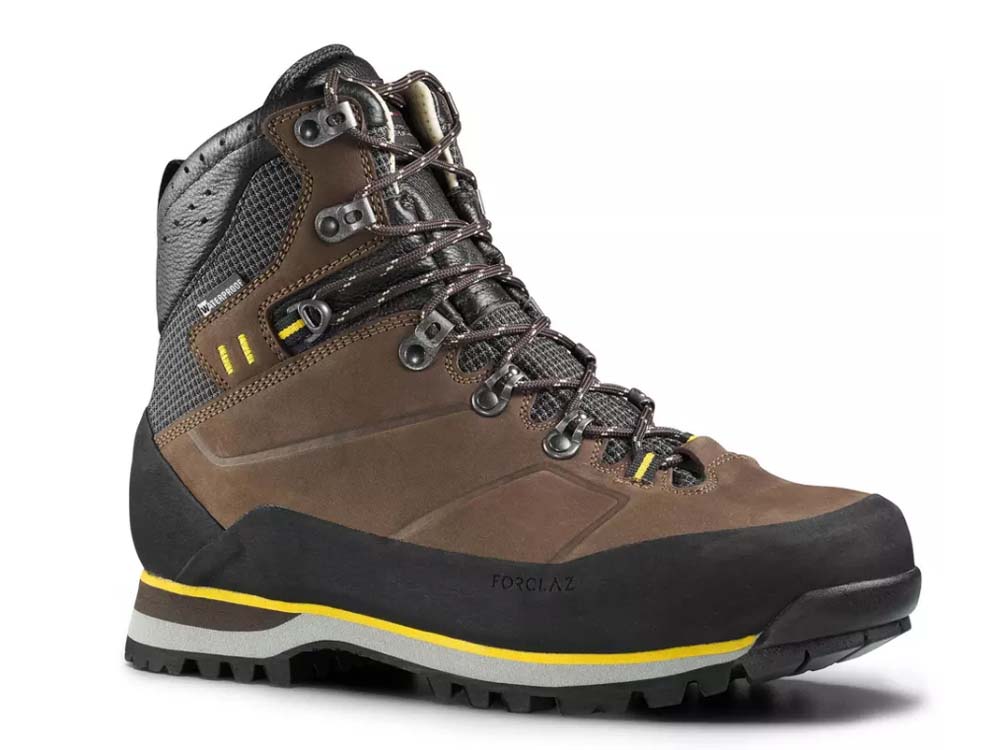The best hiking boots for every hike
What kind of shoes do you need for different walks? For climbing a mountain, you need different shoes than for a light walk on beaten tracks. Mountain and hiking shoes are therefore divided into categories from A to D. The shoes in these categories differ in terms of height, rigidity and material.
Categories of mountaineering and hiking shoes
A - Light hiking shoes
The light hiking shoes are ideally suited for hiking through forests, slightly hilly areas and the road. These shoes are particularly suitable for walks in flat areas. The sole of the shoe is flexible and the hiking shoes are often very comfortable. These shoes are well suited for everyday use. Category A hiking shoes are low shoes.
A/B - High hiking shoes
The high hiking shoe is just a little firmer than the light hiking shoe. If you go hiking in the middle mountains or on the edge of the Alps, the category A/B hiking shoe is a good solution. The soles of these shoes are a bit stiffer and thicker than the category A shoe.
B - Mountain hiking shoes or trekking shoes
This is the most popular class as these shoes can be used for hikes over difficult roads in the middle mountains and for easier hikes in the high mountains. The shoes are sturdier and therefore give more support when walking. The quality is better and the shoes are usually waterproof and made of leather. The soles of these shoes are often still flexible. However, the shoes are less suitable for long mountain tours and are somewhat less resistant to the cold.
B/C - Heavy trekking shoes
These shoes are stiffer than Class B shoes, they have a slightly stiffer sole and you can use crampons with these shoes. The shoes are better suited to hiking in snow and cold than general mountaineering shoes.
C - Mountain shoes
The real mountain shoes are used for hiking in high mountains, if you want to walk over glaciers and for heavy trekking. Of course, these shoes are also suitable for crampons. In general, shoes in this class are stiff and the sole of the shoe is not very flexible either. The shoes are often very high and have good insulation. If you go on multi-day hikes in the high mountains through the snow, a shoe from this category is recommended.
D - Alpine shoes / Expedition shoes
The expedition shoes are very stiff, have very rigid soles and offer good ankle protection. The well-insulated inner shoe can be removed from the shoe. These shoes are used for extreme mountaineering, expeditions and glacier treks. Do not use these shoes for normal hiking as they are not very comfortable.
This classification is the commonly used classification according to the Meindls category system.
Lowa mountaineering shoes class classification
Lowa uses a different classification but it is basically the same. Lowa index 1 = category D, Lowa index 2 = category C, Lowa index 3 = category B, Lowa index 4 = category A/B, Lowa index 5 = category A
Important when buying mountaineering boots
- Do not buy shoes that are too small. When hiking, your feet usually swell a little so it is wise to buy shoes in which you have some space left. If you want to buy shoes, take a pair of socks with you that you also plan to use while hiking, so you can try out whether you have enough room in the shoes when you have socks on.
- Is it important that your mountaineering boots are waterproof because you want to go hiking through the snow? Then it is useful to take Goretex shoes.
In conclusion, it is wise to try on and test the shoes in a shop before buying.


